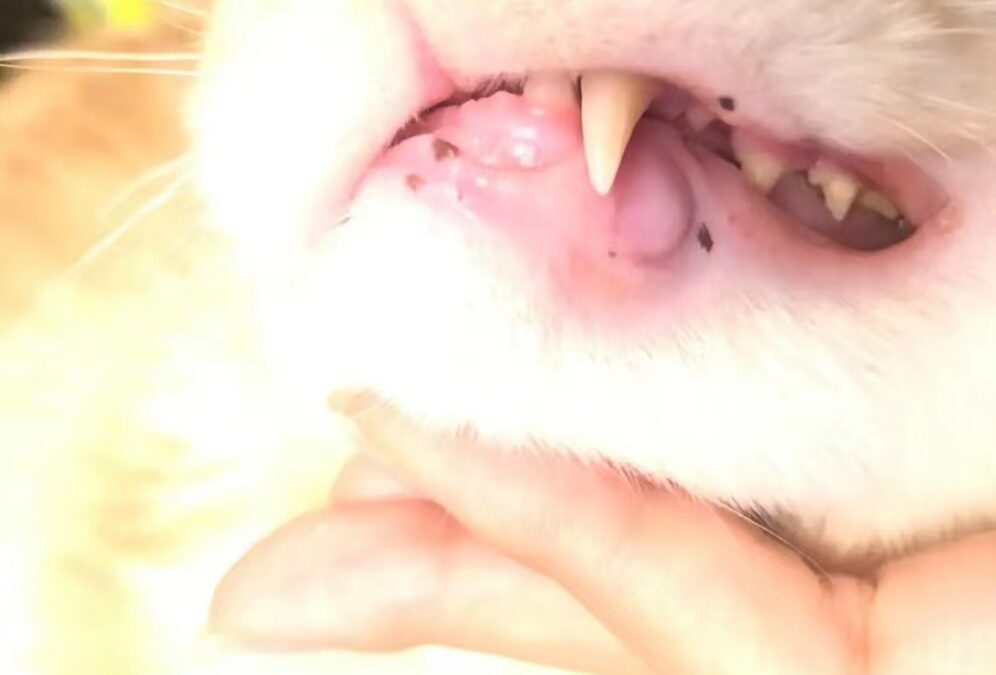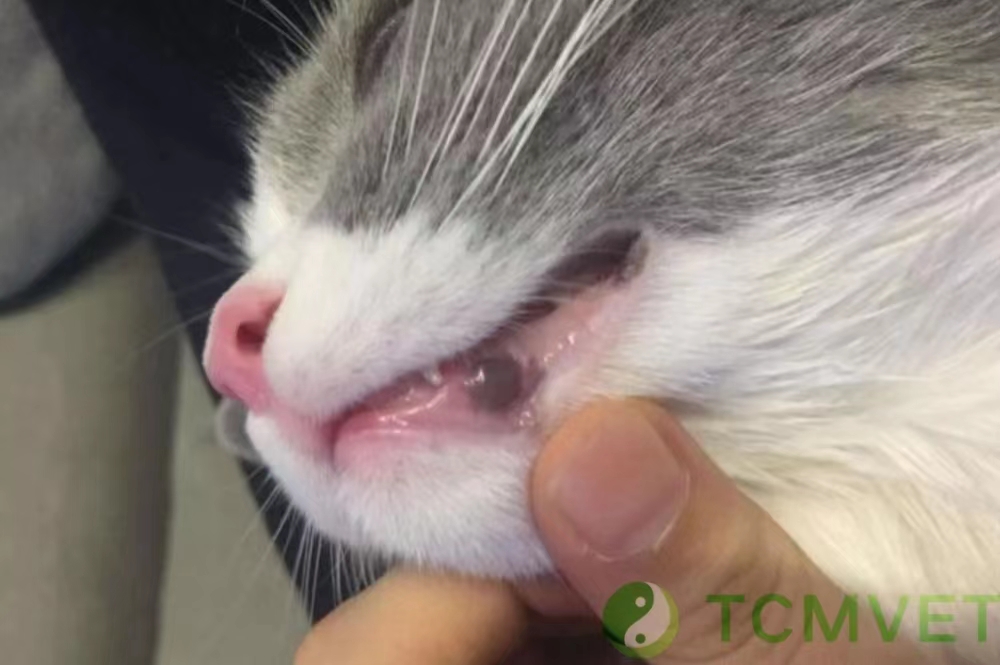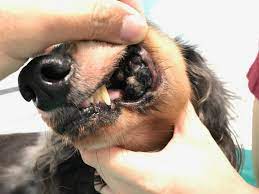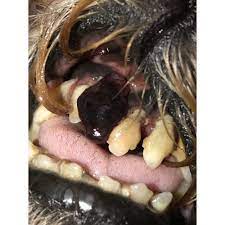
by TCMVET | Mar 6, 2024 | Dog Cancer & Tumors
Melanoma, a common form of cancer in dogs and a rarer but more serious condition in cats, is a growing concern for pet owners worldwide. Understanding the nature, symptoms, and treatment options of melanoma can significantly enhance the quality of life and treatment outcomes for our pets. This article provides a comprehensive guide for pet owners to navigate through the complexities of melanoma in pets.
Understanding Melanoma in Pets
Melanoma is a type of cancer that arises from melanocytes, the cells responsible for pigment production. In dogs, it frequently appears on the haired skin as small, dark lumps and can also develop in the oral cavity, nail beds, and eyes. Cats experience melanoma less commonly, but when they do, it tends to be more aggressive.
Symptoms and Early Detection
Early detection is crucial in managing melanoma. Pet owners should look for:
- Unusual growths or lumps on the skin or in the mouth.
- Changes in existing moles or spots.
- Swelling in the nail beds or around the eyes.
Regular veterinary check-ups are essential, especially for breeds predisposed to melanoma, such as Scottish Terriers and Golden Retrievers in dogs, and Siamese in cats.
Advanced Treatment Options
Treatment strategies have evolved significantly, with options including:
- Surgical Removal: The primary method for localized tumors.
- Radiation and Chemotherapy: Used when surgery isn’t viable or in cases of metastasis.
- Immunotherapy: Such as the canine melanoma vaccine, which boosts the pet’s immune system.
Prevention and Management
While direct causation like UV light exposure is less evident in pets, preventive measures include limiting excessive sun exposure and monitoring skin changes. Awareness and education about melanoma in pets are vital for early detection and effective treatment.
Understanding melanoma in pets is key to ensuring their wellbeing. Staying vigilant about symptoms, pursuing regular veterinary care, and exploring advanced treatment options can help manage this condition effectively. This guide serves as a resource for pet owners to better understand and care for their pets with melanoma.

by TCMVET | Mar 6, 2024 | Dog Cancer & Tumors
Melanoma, a serious form of cancer, is not just a human affliction but also affects our beloved pets, particularly dogs and to a lesser extent, cats. This article aims to educate pet owners about melanoma in pets, focusing on early detection, treatment options, and preventative measures.
Early Detection and Symptoms
Understanding Symptoms: Pet owners should look for unusual growths or changes in their pet’s skin, oral cavity, nail beds, and eyes. In dogs, melanomas often appear as small, dark-colored lumps, while in cats, they are less common but usually more aggressive.
Regular Veterinary Check-ups: Routine check-ups can help in early detection, which is crucial for successful treatment. Veterinarians can perform thorough examinations, especially in breeds predisposed to melanoma.
Treatment Options
Surgical Removal: The primary treatment for localized tumors, aiming to remove the cancer completely.
Radiation and Chemotherapy: These are options when surgical removal isn’t feasible or in cases of metastasis.
Immunotherapy: A newer approach, like the canine melanoma vaccine, which stimulates the pet’s immune system to fight cancer.
Preventative Measures
Sun Protection: While less common, UV light can contribute to melanoma. Protecting pets from excessive sun exposure, particularly those with less hair or lighter skin, is advisable.
Awareness and Education: Being aware of the breeds at higher risk and educating oneself about the signs and treatment options can significantly impact outcomes.

by TCMVET | Mar 6, 2024 | Dog Cancer & Tumors
Melanoma, a form of cancer arising from pigment-producing melanocytes, is a significant health concern in dogs and, to a lesser extent, in cats. This comprehensive guide aims to shed light on the characteristics, diagnosis, and potential treatment options for melanoma in these animals, providing valuable information for pet owners and veterinary professionals alike.
What is Melanoma?
Melanoma is a cancer that originates in melanocytes, the cells responsible for pigment production in the skin and other parts of the body. In dogs, it is a relatively common cancer, especially in breeds with considerable skin pigmentation. Unlike in dogs, melanoma is rarer in cats but tends to be more malignant when it occurs.
Common Sites and Appearances
In dogs, melanomas are most frequently found on the haired skin, presenting as small, brown to black masses. They can also appear as larger, flat, and wrinkled masses. Primary melanomas in dogs may also develop in the oral cavity, nailbed, footpad, eye, gastrointestinal tract, nasal cavity, anal sac, or mucocutaneous junctions. The most common site for oral melanoma in dogs includes the gingiva, lips, tongue, and hard palate.
Risk Factors and Causes
Unlike human melanomas, which are often linked to UV light exposure, canine melanoma is less likely attributed to sunlight due to the protective hair coat of most breeds. However, the exact risk factors for canine melanoma are not well established. In cats, melanoma is less common and its causes are similarly complex and not fully understood.
Diagnosis and Pathology
Diagnosing melanoma can be challenging, especially anaplastic amelanotic melanomas that resemble soft tissue sarcomas. Immunohistochemical methods are frequently used to increase diagnostic precision, employing antibodies like PNL2 and tyrosinase, in addition to Melan A and S-100.
Molecular Biology Insights
Canine and feline melanomas have a limited molecular characterization compared to human melanomas. In canine oral malignant melanomas (MMs), BRAF mutations common in human cutaneous melanoma are uncommon. However, ERK activation similarities in human and canine MMs suggest potential parallels in molecular pathways. Researchers have also identified other molecular abnormalities in canine and feline melanoma, providing new avenues for treatment research.
Treatment Options and Research
The treatment of melanoma in dogs and cats depends on various factors, including the location, size, stage, and histological characteristics of the tumor. Some of the treatment options include:
- Surgery: The primary treatment for localized melanoma, aiming to remove the entire tumor.
- Radiation Therapy: Often used for tumors that cannot be completely removed surgically.
- Chemotherapy: Employed in cases where the melanoma has spread, although its effectiveness can vary.
- Immunotherapy: A newer approach, such as the use of Oncept vaccine in dogs, specifically designed for canine melanoma.
Future Therapeutic Targets
Recent transcriptome analysis in canine melanoma has revealed new therapeutic targets in the focal adhesion and PI3K-Akt signaling pathways. Furthermore, the presence of exon 11 c-kit gene mutations in some dogs with malignant melanoma opens up the possibility for targeted therapy using KIT small molecule inhibitors.
The Road Ahead
Continued research into the molecular biology of canine and feline melanomas holds promise for the development of more effective treatments. Understanding somatic mutations in genes like NRAS and PTEN, similar to human melanoma hotspots, may offer new therapeutic avenues.
Melanoma in dogs and cats presents a unique set of challenges in veterinary medicine. Ongoing research and advances in molecular biology are key to improving diagnosis and treatment. Pet owners should be aware of the signs and consult with a veterinarian for early detection and optimal care.

by TCMVET | Mar 5, 2024 | Dog Cancer & Tumors
Oral tumors in dogs account for about 6% of all canine tumors and are a significant concern for pet owners and veterinarians. This article provides an in-depth look at the various types of oral tumors in dogs, their prevalence, symptoms, and effective treatment options.
Types of Canine Oral Tumors: Oral tumors in dogs can be classified into several categories based on their histological makeup, including:
- Epithelial Tumors: Such as squamous cell carcinoma (SCC), papillomas, fibropapillomas, intraosseous carcinomas, and infiltrative nasal carcinomas.
- Melanocytic Tumors: Including malignant melanomas.
- Mesenchymal Tumors: Like fibrosarcomas, hemangiosarcomas, and osteosarcomas.
- Mixed Tumors: Such as transmissible venereal tumors and lymphomas.
- Odontogenic Tumors: Specific to tooth-forming tissues, including ameloblastomas.
Epidemiology and Prevalence: Oral tumors are more common in older dogs and certain breeds, such as Cocker Spaniels and German Shepherds. Symptoms such as decreased appetite, bad breath, tooth loosening or loss, bleeding, eye protrusion, nosebleeds, swallowing difficulties, chewing pain, and increased thirst are often observed.
Diagnosis and Treatment: Early diagnosis through biopsies is essential for effective treatment, which may include surgery, radiation, or chemotherapy, depending on the tumor type.
Understanding the types, symptoms, and treatment options for canine oral tumors is crucial for early detection and effective management. Regular veterinary check-ups are vital for maintaining the oral health of dogs and catching any anomalies early.

by TCMVET | Mar 5, 2024 | Dog Cancer & Tumors
Malignant melanoma stands out as the most prevalent oral tumor in dogs, accounting for 30%-40% of all malignant oral tumors. This article aims to provide a detailed overview of malignant melanomas in canines, focusing on their prevalence, risk factors, symptoms, and treatment options.
Prevalence and Risk Factors: Malignant melanoma typically affects older dogs, with an average onset age of around 12 years. It is more common in male dogs and is seen with a higher frequency in dogs with darker oral mucosa. Certain breeds, such as Chow Chows and Golden Retrievers, are at a higher risk of developing this condition.
Symptoms and Diagnosis: Malignant melanomas in dogs can occur in various locations within the mouth, including the gums, cheek mucosa, lips, hard and soft palates, and the tongue. These tumors are often firm and darkly pigmented, although about 33% of cases may present as non-pigmented tumors. They can sometimes have ulcerated or necrotic surfaces. Rapid growth and local infiltration are characteristic of these tumors.
Treatment and Management: The management of malignant melanoma in dogs requires an integrated approach involving surgical removal, possibly followed by radiation therapy or chemotherapy. The prognosis depends on the stage of the tumor at diagnosis and the effectiveness of the treatment.
Early detection and prompt treatment are key in managing malignant melanoma in dogs. Regular veterinary check-ups and awareness of the symptoms can help in early diagnosis, improving the chances of successful treatment.






